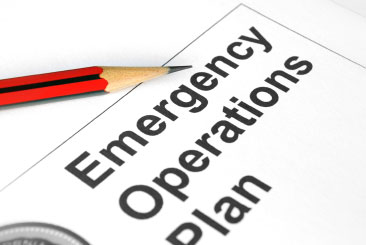|
|
| Knock the Dust Off |
| By Terry Campbell, Professor, Purdue University Global |
| Published: 08/23/2023 |
 All prisons and jails have an Emergency Procedures Manual, and staff are trained to utilize it.
The importance of this emergency manual should be emphasized more. There are many variables
to consider when creating the emergency manual. This is a valuable manual and provides
detailed procedures to follow in emergencies. Implementation of the emergency procedures may
include the following; Emergency Notification, suicides, weather, fires, riots, and other
disturbances, escapes, staff shortages, critical incident review, and others. These procedures will
vary from facility to facility. We also must consider if the agency is accredited.
All prisons and jails have an Emergency Procedures Manual, and staff are trained to utilize it.
The importance of this emergency manual should be emphasized more. There are many variables
to consider when creating the emergency manual. This is a valuable manual and provides
detailed procedures to follow in emergencies. Implementation of the emergency procedures may
include the following; Emergency Notification, suicides, weather, fires, riots, and other
disturbances, escapes, staff shortages, critical incident review, and others. These procedures will
vary from facility to facility. We also must consider if the agency is accredited.
Some prisons, jails, probation and parole agencies, and juvenile divisions also have an emergency procedures manual. Also, we must recognize that terminology will vary from agency to agency. A question often asked is whether accreditation is required to have an emergency manual. A short answer is no; however being accredited has many advantages and has assistance in creating the manual. All staff, uniform, non-uniform, contract employees, volunteers, and others will be trained. Also, all areas must be involved in developing these procedures. This is a team effort. The administration must ensure to communicate with their staff the development of the manual. This is an ideal time to review policies, procedures, and post orders. Initially, there is excitement and commitment to creating this extremely important. ‘Emergency Plan.’ All staff must be involved in this process. The process is very detailed and can identify areas that have not been considered. The administration must identify employees who are responsible for each content area. Many valuable templates and assistance are available in developing the Emergency Procedures Manual. In addition, emergency plan leaders must ensure all agencies within and outside their agencies have updated names, telephone numbers, and other contact information. Also, a detailed schedule and projected implementation information is recommended. This will include precise training dates, an annual review, and emergency plan test and implementation. Now is the time to identify errors, not during an actual incident. Also, identify someone responsible for providing updates as necessary and signing off on tracking forms. The following are my thoughts after the Emergency Plan is developed and implemented. As time progresses, some agencies must remember the work, time, and dedication required to complete the plan. Unfortunately, as time begins to pass, we often become complacent, and when we have an emergency, we need to remember to implement the emergency plan. If not implemented we are adding to the already present challenges. Let’s face it; there are many challenges and dilemmas faced daily by correctional agencies. There are critical incidents and these will be investigated. We do not want to try and explain why we did not implement the emergency plan. There are additional safety and security concerns. Also, this can be embarrassing, especially when we realize the plan is outdated, cannot be located, someone forgot to implement, or the emergency plan manual is covered in dust. This is very obvious that this is not a priority. I am sure some of you have experienced this. I know I have. There are reasons for this, and these are excuses. We strive for excellence and are professionals, yet we need help to stay focused. We can point the finger all too often, yet the responsibility and accountability is on the leaders and their team. Any given day in corrections has the potential for problems. We certainly have ample stress, and at times it can be challenging to remain motivated. Remember, safety and security are a must. At the end of our shift, all staff can go home. Currently, corrections continue to face the following daily challenges.
Stay safe. Terry Terry Campbell is a criminal justice professor at Purdue University Global and has more than 20 years of experience in corrections and policing. He has served in various roles, including prison warden and parole administrator, for the Arkansas Department of Corrections. Terry may be reached at tcampbell@purdueglobal.edu. Other articles by Campbell |
MARKETPLACE search vendors | advanced search

IN CASE YOU MISSED IT
|


Comments:
No comments have been posted for this article.
Login to let us know what you think